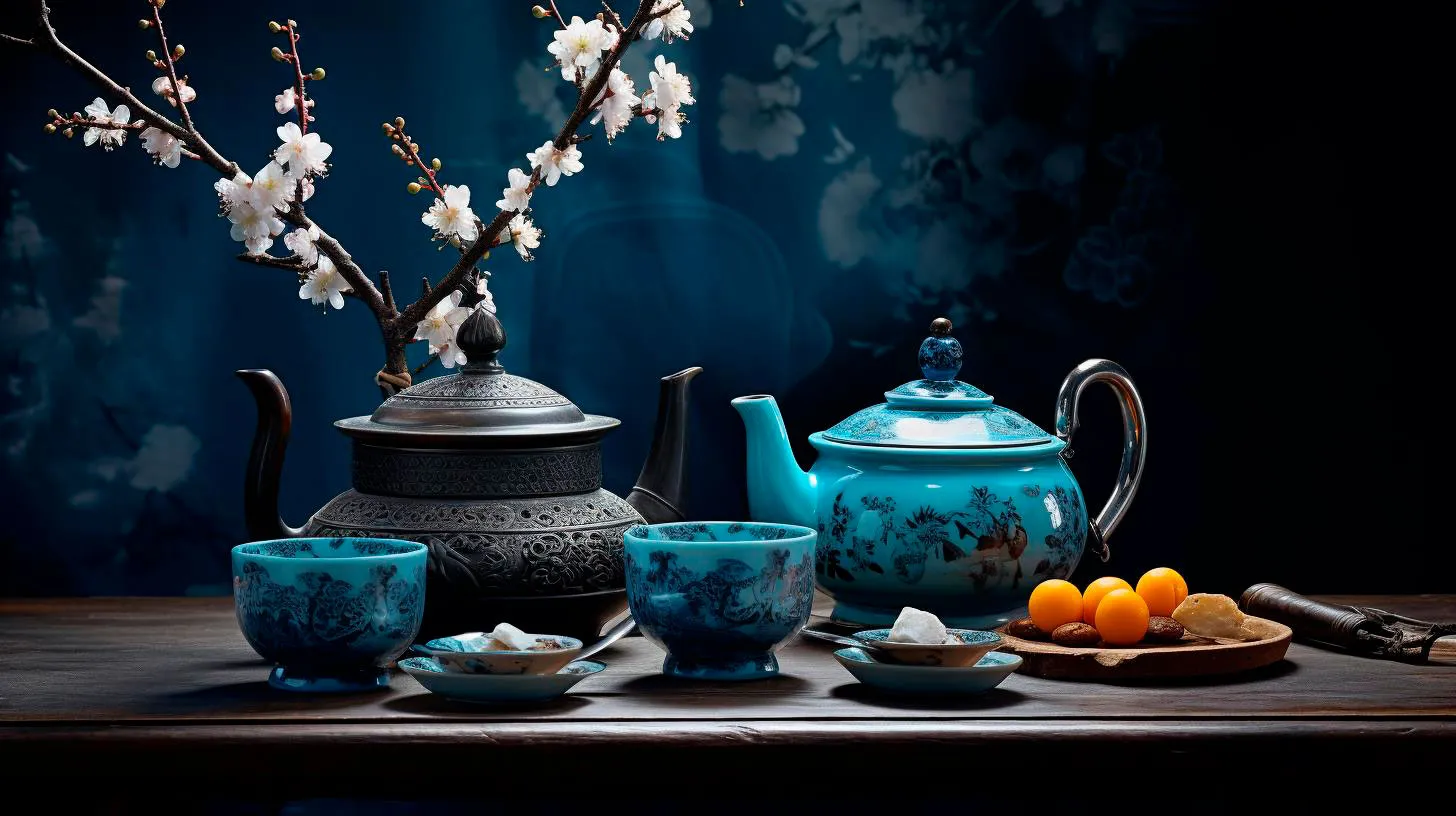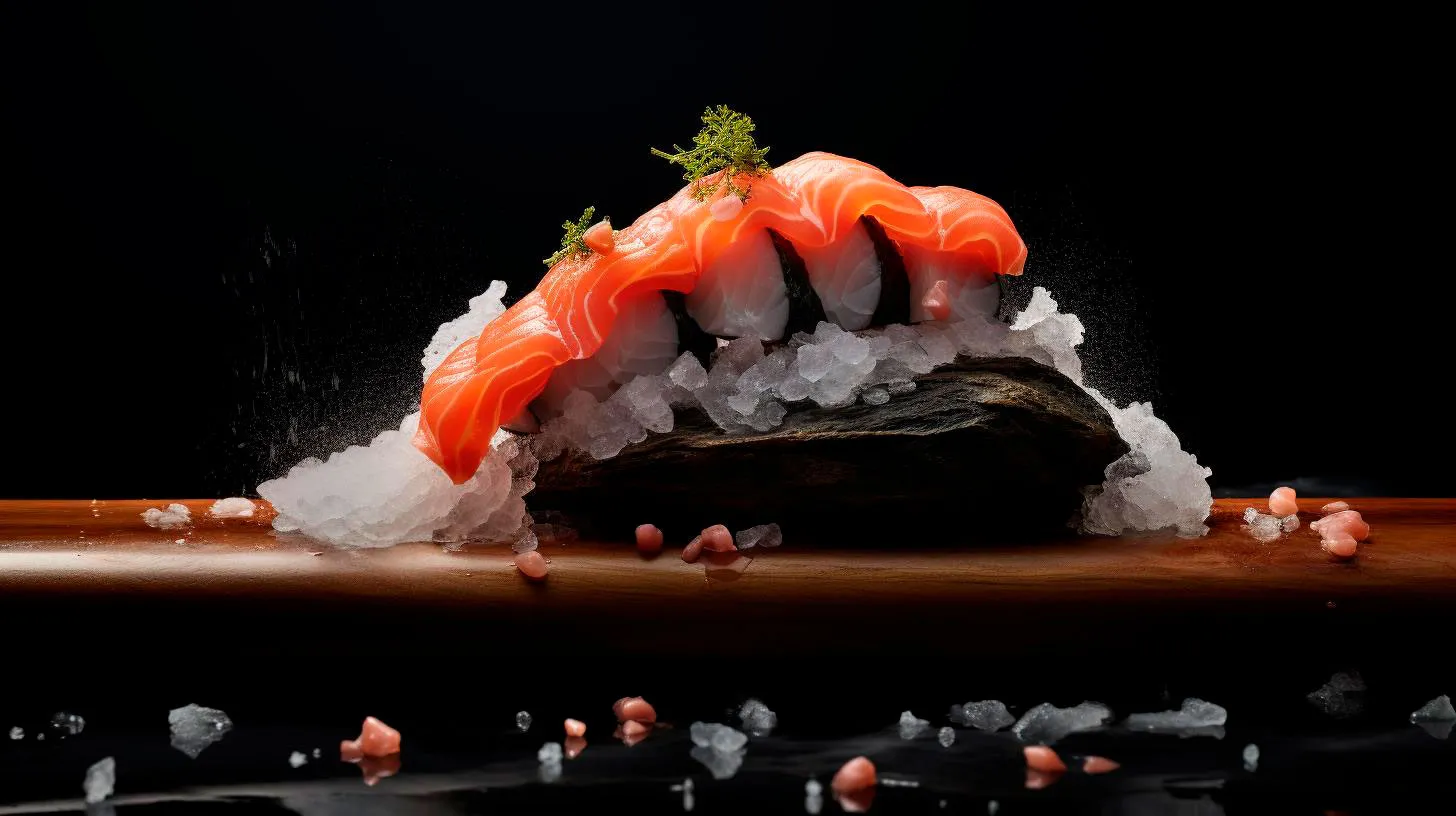Explore the Flavors of Pickled Ginger
What is Pickled Ginger?
Pickled ginger, also known as Gari, is a traditional accompaniment to sushi in many parts of the world. It is made from thinly sliced ginger that has been marinated in a mixture of vinegar, sugar, and salt. The result is a vibrant pinkish-white ginger that has a tangy, sweet, and slightly spicy taste.
Gari not only enhances the overall sushi experience but also serves as a palate cleanser between different sushi pieces. Its refreshing taste helps balance the flavors and removes any lingering aftertaste, allowing you to fully savor the delicate taste of each sushi roll or fish.
The Different Flavors of Pickled Ginger
While the taste of pickled ginger is consistent across different varieties, there are a few variations that add a unique twist to this delightful condiment.
1. Traditional Pickled Ginger:
- Traditional pickled ginger is the most commonly used type.
- It has a pale pink color and a well-balanced tangy and sweet flavor.
- It pairs perfectly with various types of sushi, enhancing their taste.
2. Wasabi Pickled Ginger:
- For those who love a bit of heat, wasabi pickled ginger is the way to go.
- This variety incorporates a hint of wasabi, adding a spicy kick to the ginger flavor.
- It provides an excellent contrast to milder sushi options.
3. Ume Pickled Ginger:
- Ume pickled ginger is made by infusing plum vinegar into the pickling process.
- It has a slightly sweeter and fruity taste compared to traditional pickled ginger.
- This variation is an ideal choice for those seeking a unique flavor profile.
The Advantages of Pickled Ginger
Now that we have explored the different flavors of pickled ginger, let’s take a look at the advantages this versatile condiment offers:
1. Aids Digestion:
- Consuming pickled ginger can help improve digestion.
- Ginger is known for its beneficial properties, such as reducing bloating and calming an upset stomach.
- It acts as a natural remedy for indigestion and nausea.
2. Rich in Antioxidants:
- Ginger is loaded with antioxidants that help fight off free radicals in the body.
- These antioxidants have been linked to reducing the risk of chronic diseases.
- By incorporating pickled ginger into your diet, you can boost your intake of these powerful compounds.
3. Increases Flavor and Satiety:
- Adding pickled ginger to your meals can enhance their overall flavor and make them more satisfying.
- It adds a zesty, tangy kick that elevates the taste of various dishes.
- By intensifying the flavors, pickled ginger can make your meal feel more fulfilling.
Key Takeaways
Pickled ginger is more than just a colorful condiment alongside your sushi. Its unique flavors and health benefits make it a versatile ingredient that can elevate various dishes. Here are the key takeaways from our exploration of pickled ginger:
- Pickled ginger comes in different flavors, including traditional, wasabi, and ume varieties.
- Each variety offers a unique taste experience, enhancing different types of dishes.
- Consuming pickled ginger can aid digestion, provide antioxidants, and increase flavor and satiety.
- Don’t be afraid to experiment and incorporate pickled ginger into your everyday meals to enjoy its delightful flavors and health benefits.
That concludes our journey into the flavors of pickled ginger. We hope you’ve enjoyed this brief departure from our regular tech articles. Stay tuned for more exciting tech updates coming your way soon!
Mastering the Pickling Process
In this article, we will guide you through the steps of pickling, provide you with valuable tips, and explore the advantages and key takeaways of this age-old preservation technique.
The Basics of Pickling
Pickling is a preservation process that involves immersing food items in an acidic solution, usually vinegar, along with various spices and herbs. This acidic environment creates an inhospitable environment for bacteria, ensuring that the pickled foods remain safe to eat for extended periods. Not only does pickling increase the longevity of perishable produce, but it also imparts unique flavors, textures, and vibrant colors.
Let’s delve into the step-by-step process of pickling:
Step 1: Choosing the Right Ingredients
- Select fresh and firm vegetables, such as cucumbers, carrots, and bell peppers, for the best pickling results.
- Ensure that the fruits or vegetables you choose are free from blemishes or bruises.
- Experiment with different combinations of spices and herbs to create unique flavor profiles.
Step 2: Preparing the Brine
- Prepare a brine solution by combining water, vinegar, salt, and sugar.
- Adjust the ratio of vinegar to water based on your taste preferences and the acidity of the desired end product.
Step 3: Sterilizing and Packing
- Sterilize the jars and lids thoroughly to prevent contamination.
- Pack the vegetables tightly into the jars, leaving enough headspace to allow the brine to cover the contents completely.
Step 4: Pickling Time
- Seal the jars tightly and store them in a cool, dark place.
- Let the flavors develop by allowing the jars to sit undisturbed for a specified period.
- The pickling time varies depending on the recipe and desired level of tanginess, ranging from a few days to several weeks.
By following these steps, you will be well on your way to pickling perfection!
The Advantages of Pickling
Pickling goes beyond simply preserving perishable foods. Here are some advantages of pickling that will inspire you to embark on a pickling journey:
- Extended Shelf Life: Pickling significantly extends the life of fresh produce, allowing you to enjoy your favorite fruits and vegetables throughout the year.
- Enhanced Flavor: The pickling process infuses the ingredients with a delectable tang, adding depth and complexity to their taste.
- Health Benefits: Pickled foods are rich in probiotics, aiding digestion and promoting gut health. They also retain many of the vitamins and minerals found in their fresh counterparts.
- Creative Culinary Applications: Pickled ingredients can be used in a variety of dishes, from sandwiches and salads to tacos and stir-fries, adding a punch of flavor and a unique texture.
Key Takeaways
Pickling is a time-tested method of preserving and enhancing the flavor of various foods. By following the basic steps of pickling and experimenting with different ingredients, spices, and herbs, you can create a range of delicious pickled treats. The advantages of pickling go beyond preservation, offering extended shelf life, enhanced flavors, health benefits, and endless culinary possibilities.
So, embrace the art of pickling and add a zesty twist to your culinary endeavors!
The Origins of Pickled Ginger
In this article, we’ll explore the origins of pickled ginger and discover why it has become an integral part of Japanese cuisine.
A Brief History
The history of pickled ginger can be traced back to ancient China, where it was believed to have medicinal properties. Ginger itself has been used for centuries in traditional Asian medicine for its various health benefits, including its ability to aid digestion, reduce inflammation, and relieve nausea.
Over time, ginger traveled from China to Japan, and it was during the Edo period (1603-1868) that the Japanese began pickling ginger. The purpose was not only to preserve this flavorful root but also to enhance its taste. This pickling process involved marinating thinly sliced ginger in a mixture of vinegar, sugar, and salt, resulting in the familiar pink hue that we commonly see today.
The Process
The traditional pickling method for ginger involves carefully peeling and slicing the ginger root into thin strips. These strips are then soaked in a mixture of rice vinegar, sugar, and salt. The duration of the pickling process can vary, ranging from a few hours to several days, depending on the desired flavor intensity.
During the pickling process, the acidic nature of the vinegar not only adds a tangy taste but also acts as a natural preservative, extending the shelf life of the ginger. The addition of sugar helps to balance out the sharpness of the vinegar, resulting in a sweet and tangy flavor profile. Salt not only enhances the flavor but also helps to draw out excess moisture from the ginger strips.
Health Benefits
Pickled ginger not only enhances the taste of your sushi but also provides several health benefits:
- Digestive Aid: Ginger is known to stimulate digestion and improve nutrient absorption, making it an excellent companion to a sushi meal.
- Anti-Inflammatory Properties: Ginger contains gingerol, a bioactive compound with powerful anti-inflammatory effects. Regular consumption of pickled ginger may help reduce inflammation in the body.
- Relief from Nausea: Ginger has long been used as a natural remedy for motion sickness, morning sickness, and general nausea. Pickled ginger can provide relief from such discomfort.
- Antioxidant Rich: Ginger contains antioxidants that help protect the body against oxidative stress and may contribute to overall well-being.
Key Takeaways
As we delve into the origins and benefits of pickled ginger, here are some key takeaways to remember:
- Pickled ginger has a long history, originating in ancient China and later becoming an essential part of Japanese cuisine.
- The pickling process involves marinating ginger in a mixture of vinegar, sugar, and salt, resulting in its distinct flavor and color.
- Ginger itself offers numerous health benefits, including aiding digestion, reducing inflammation, and relieving nausea.
- Pickled ginger acts as a flavorful and healthy accompaniment to sushi, enhancing the overall dining experience.
So, the next time you enjoy a sushi feast, take a moment to appreciate the origins of that pink sidekick on your plate. And remember, beyond its vibrant appearance, pickled ginger brings both flavor and health benefits to your culinary adventure.
Innovative Techniques in Pickling Ginger
However, as its popularity has grown, chefs and home cooks have come up with innovative techniques to enhance the flavor and texture of pickled ginger. In this article, we will explore some of these techniques and how they can elevate your culinary creations.
1. Fermentation: Unleashing Flavor Complexity
Fermenting ginger opens up a whole new world of flavors. By submerging ginger in a brine of water, salt, and sugar and allowing it to ferment for a few days, the ginger undergoes a transformation. The fermentation process enriches the flavor with a delightful tanginess while developing complex umami notes.
Key takeaways:
- Fermentation enhances the flavor profile of pickled ginger.
- It adds a tangy and umami taste.
- The process takes a few days, but the result is worth it.
2. Infusions: Infusing Ginger with Aromatic Delights
Infusing ginger with various aromatic ingredients can lend unique flavors to your pickled ginger. You can experiment with ingredients such as lemongrass, kaffir lime leaves, star anise, and even chili peppers to create exciting flavor combinations. Simply place these ingredients in the pickling liquid, and let the ginger absorb their essence.
Key takeaways:
- Infusing ginger with aromatic ingredients introduces new layers of flavors.
- Lemongrass, kaffir lime leaves, star anise, and chili peppers are great options for infusion.
- Let the ginger sit in the pickling liquid to absorb the essence of the ingredients.
3. Texture Play: Crispy and Crunchy Pickled Ginger
If you prefer a crunchier texture in your pickled ginger, try lightly blanching it before pickling. Blanching involves quickly immersing the ginger in boiling water for a short period and then transferring it to an ice bath to halt the cooking process. This technique not only adds crispiness but also helps reduce the strong pungency of raw ginger.
Key takeaways:
- Blanching ginger before pickling gives it a crunchy texture.
- The process involves quick boiling and then transferring it to an ice bath.
- Blanching reduces the pungency of raw ginger.
4. Colorful Visual Appeal: Adding Vibrancy to Pickled Ginger
Pickled ginger doesn’t have to be just pale pink. By incorporating natural coloring agents, you can create beautifully vibrant shades. For instance, you can use beetroot juice for a vibrant red or butterfly pea flower tea for a stunning blue hue. Infusing ginger with natural colors not only adds visual appeal but also adds subtle flavors.
Key takeaways:
- Experiment with natural coloring agents to create vibrant shades.
- Beetroot juice gives a red color, and butterfly pea flower tea creates a stunning blue hue.
- Natural colors add visual appeal and subtle flavors.
Conclusion
Pickling ginger is a delightful way to add zesty and tangy flavors to your dishes. By incorporating innovative techniques such as fermentation, infusion, texture play, and color enhancement, you can take your pickled ginger to a whole new level of taste and visual appeal. Whether you are a professional chef or a home cook, experimenting with these techniques will allow you to create unique and unforgettable culinary experiences.



